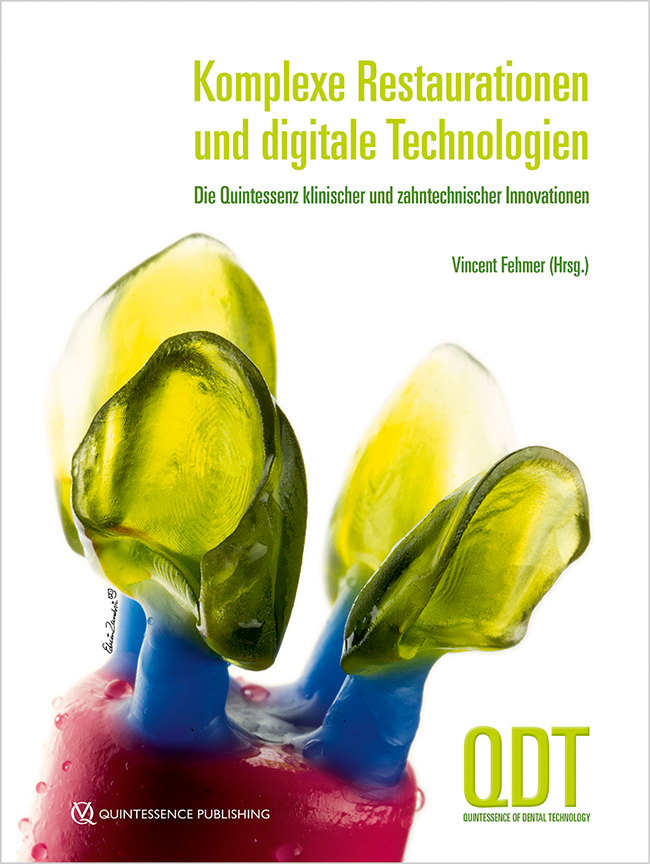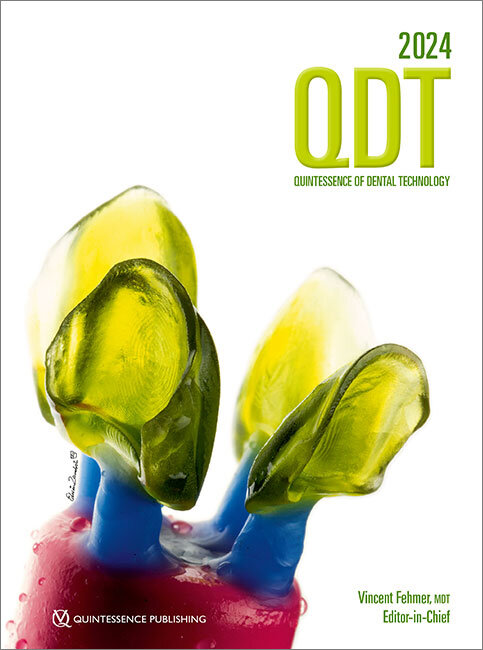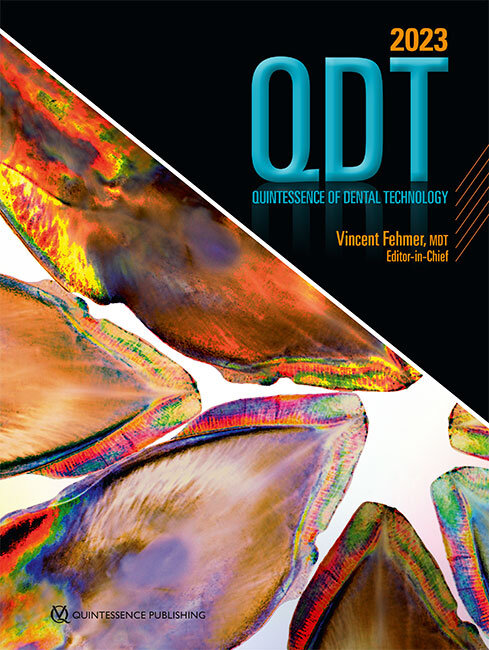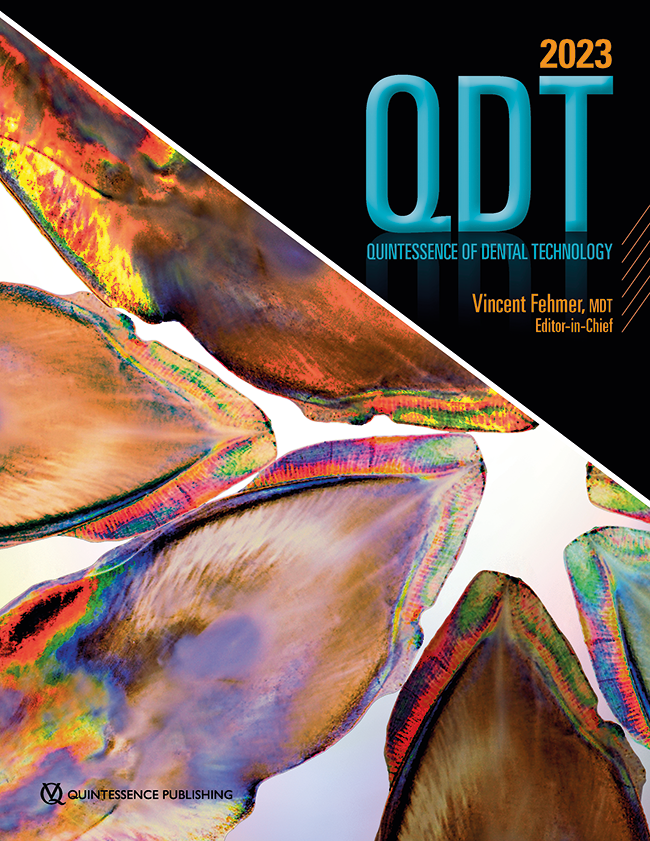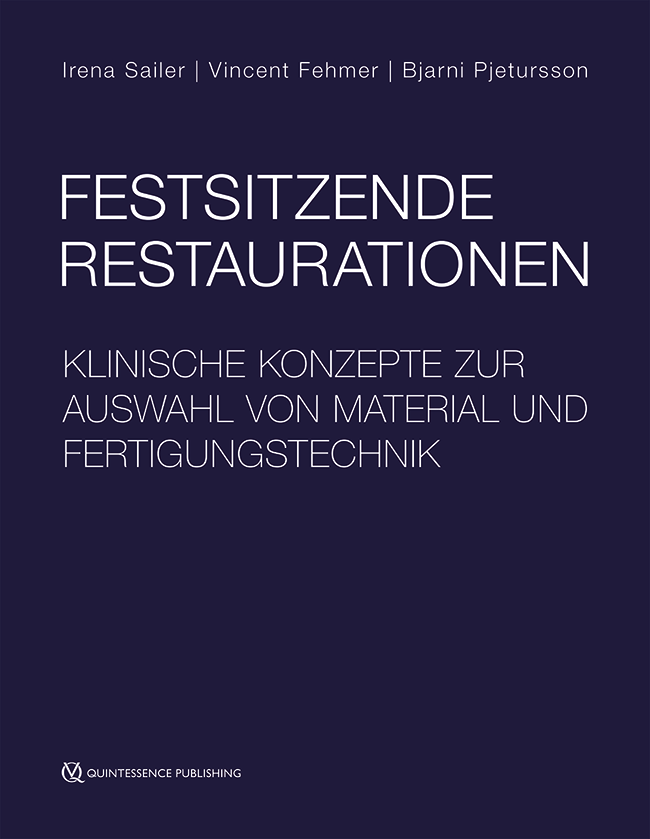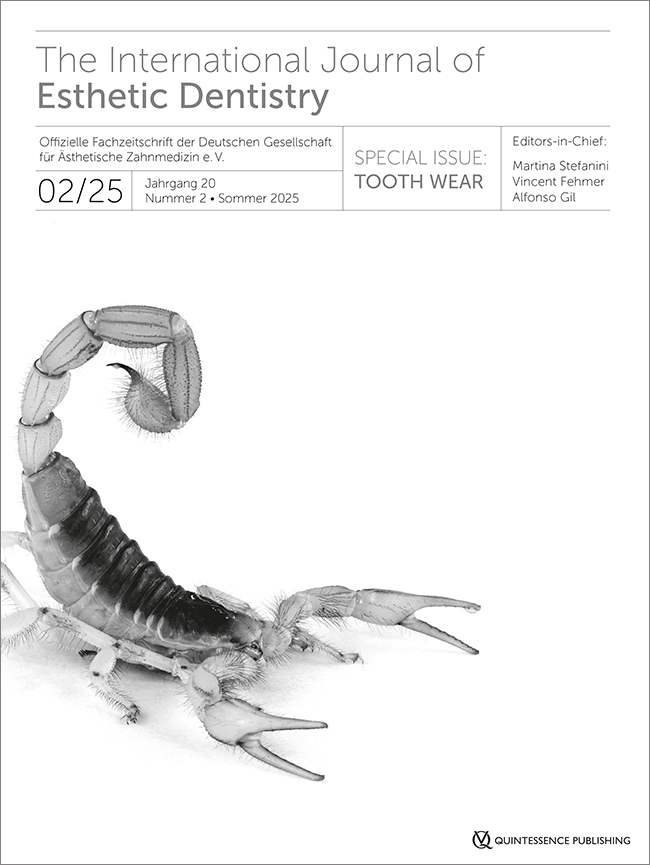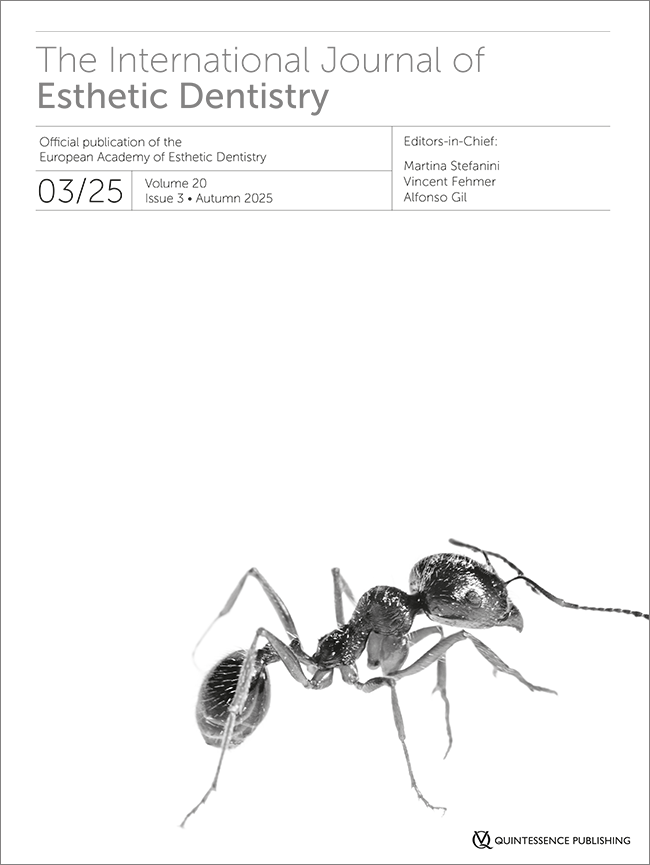The International Journal of Prosthodontics, 5/2024
DOI: 10.11607/ijp.8565, PubMed ID (PMID): 37729480Pages 575-582a, Language: EnglishAzevedo, Luís / Marques, Tiago / Karasan, Duygu / Fehmer, Vincent / Sailer, Irena / Correia, André / Gómez Polo, MiguelPurpose: To evaluate the accuracy of complete-arch digital implant impressions using different intraoral scan body (ISB) materials and intraoral scanners (IOSs). Materials and Methods: The mandibular dental cast of an edentulous patient with six tissue-level dental implants was used as the master cast. Two types of ISBs—polyether ether ketone (PEEK) and plasma-coated medical titanium—were used with five IOSs: TRIOS 4 (T4), Virtuo Vivo (VV), Medit i700 (Mi700), iTero 5D (i5D), and Primescan (PS). To assess accuracy, digital impressions (n = 10) with each IOS and ISB were compared to two reference models obtained by digitizing the master cast with each ISB type using a desktop scanner (IScan4D LS3i) and importing the scan data into metrology software (Geomagic Control X). Root mean square (RMS) error was employed to evaluate overall deviation values (trueness), while precision was determined using the SD of RMS values. Statistical significance was set at P < .05. Kruskal-Wallis test was used, followed by the pairwise comparison method with Bonferroni correction (α = .05). Results: An interaction between ISB material and IOS was found (P = .001). Plasma-coated medical titanium ISBs demonstrated significantly higher trueness and precision compared to PEEK ISBs with T4 (P = .001), Mi700 (P = .001; P = .004), and i5D (P = .001). Conversely, VV exhibited higher trueness and precision values with PEEK ISBs (P = .005; P = .003). PS provided the highest trueness and precision regardless of the ISB material (P = .912). T4 showed the lowest accuracy for PEEK ISBs, and VV showed the lowest accuracy for plasma-coated medical titanium ISBs. Conclusions: Except for PS, all IOSs showed significant differences between ISB materials. PS demonstrated the highest accuracy with both ISB materials, whereas T4 had the lowest accuracy for PEEK ISBs, and VV showed the lowest accuracy for plasma-coated medical titanium ISBs.
QZ - Quintessenz Zahntechnik, 4/2024
EditorialPages 347, Language: GermanFehmer, VincentThe International Journal of Prosthodontics, 5/2023
Online OnlyDOI: 10.11607/ijp.7576, PubMed ID (PMID): 36288489Pages e88-e102, Language: EnglishBurkhardt, Felix / Sailer, Irena / Fehmer, Vincent / Mojon, Philippe / Pitta, JoãoPurpose: To assess the influence of the bonding system and restorative material on the marginal integrity and pull-off forces of monolithic all-ceramic crowns bonded to titanium base (ti-base) abutments. Materials and Methods: A total of 108 ti-bases were sandblasted and divided into nine experimental groups (n = 12) according to the combination of crown material (polymer-infiltrated ceramic-network [PI], lithium-disilicate [LD], and zirconia [ZI]) and bonding system (Multilink Hybrid-Abutment [MH], Panavia V5 [PV], RelyX Ul5mate [RU]) with the respective primers. After bonding the crowns to the ti-base abutments, the restorations were screw-retained on implants and thermomechanically aged (1,200,000 cycles, 49 N, 1.67 Hz, 5 to 55°C). Marginal integrity and bonding failures were evaluated under a light microscope, and pull-off forces (N) were calculated. Chi-square tests for marginal integrity as well as one-way and two-way ANOVA statistical tests for pull-off forces were applied (a = .05). Results: PI presented higher marginal integrity than LD (P = .023). Bonding system PV revealed higher marginal integrity than MH (P =.005) and RU (P =.029). Differences in pull-off forces were found between restorative material and resin cements (P < .001), with the highest values for ZI + RU (598 ± 192 N), PI + PV (545 ± 114 N), LD + MH (532 ± 116 N), and PI + RU (528 ± 81 N). Specimens with marginal integrity revealed higher pull-off forces than those with alteration (P = .006). Specimens presenting bonding failures (micromovements) showed lower pull-off forces than those without bonding failures (P < .001). Conclusions: The tested CAD/CAM materials show favorable bonding performances with different bonding systems, nevertheless for each restorative material a specific bonding system has to be recommended. Int J Prosthodont 2023;36:e88–e102
International Journal of Esthetic Dentistry (DE), 4/2023
EditorialPages 347-348, Language: GermanFehmer, VincentInternational Journal of Esthetic Dentistry (EN), 4/2023
EditorialPubMed ID (PMID): 37819560Pages 325-326, Language: EnglishFehmer, VincentInternational Journal of Esthetic Dentistry (EN), 1/2023
EditorialPubMed ID (PMID): 36734420Pages 9-10, Language: EnglishFehmer, Vincent / Gil, Alfonso / Stefanini, MartinaInternational Journal of Esthetic Dentistry (DE), 1/2023
EditorialPages 7-8, Language: GermanFehmer, Vincent / Gil, Alfonso / Stefanini, MartinaInternational Journal of Esthetic Dentistry (DE), 4/2022
EditorialPages 399-400, Language: GermanFehmer, VincentImplantologie, 4/2022
Pages 387-398, Language: GermanHappe, Arndt / Debring, Leonie / Schmidt, Alexander / Fehmer, Vincent / Neugebauer, JörgEine randomisierte kontrollierte klinisch-volumetrische Studie Die Bindegewebetransplantation zählt heute zu den Standardverfahren zur Kompensation von Volumendefiziten bei Sofortimplantation. Neue Biomaterialien wie azelluläre Matrices könnten die Gewinnung autogenen Gewebes auf ein absolut notwendiges Minimum reduzieren und damit die Häufigkeit und das Ausmaß postoperativer Beschwerden verringern. Die vorliegende randomisierte Studie verglich die klinischen Therapieergebnisse von Sofortimplantationen in der Oberkieferfront, bei denen sowohl eine knöcherne Augmentation als auch eine Weichgewebeverdickung durchgeführt wurde. Neben anorganischem bovinem Knochenmaterial (ABBM) kam entweder ein Bindegewebeersatz aus porciner Dermis, eine azelluläre dermale Matrix (ADM) oder ein autogenes Bindegewebetransplantat (BGT) zum Einsatz. An der Studie nahmen 20 Patienten (11 Männer, 9 Frauen) mit einem Durchschnittsalter von 48,9 Jahren (21−72 Jahre) teil. Die Zuordnung der Studienteilnehmer zu der Test- (ADM) bzw. Kontrollgruppe (BGT) geschah nach dem Zufallsprinzip. Der Zahnextraktion folgte die sofortige Implantatinsertion. Der bukkale Knochen wurde mit ABBM augmentiert. Eine ADM oder ein BGT diente zur Verdickung des bukkalen Weichgewebes und somit zur Kompensation des erwarteten Verlustes von bukkalem Volumen. Die klinische und volumetrische Nachuntersuchung fand 12 Monate nach Implantatinsertion statt. Bei allen Implantaten hatte eine Osseointegration stattgefunden und die prothetische Versorgung befand sich in situ. Ein Jahr postoperativ betrug die durchschnittliche, linear gemessene Volumenveränderung −0,55 ± 0,32 mm (ADM) bzw. −0,60 ± 0,49 mm (BGT). Patienten der ADM-Gruppe beklagten signifikant weniger postoperative Beschwerden. Bei Sofortimplantation mit Augmentation von Hart- und Weichgewebe führten Ersatzmaterialien und autogene Bindegewebetransplantate zu ähnlichen klinischen Ergebnissen hinsichtlich der gemessenen Volumenveränderungen. Die Anwendung von Ersatzmaterial führte zu signifikant weniger postoperativer Morbidität.
Manuskripteingang: 07.01.2021, Annahme: 14.04.2021
Keywords: Sofortimplantation, Weichgewebeverdickung, Bindegewebetransplantat, azelluläre dermale Matrix, anorganisches bovines Knochenmaterial
International Journal of Esthetic Dentistry (EN), 4/2022
EditorialPubMed ID (PMID): 36426609Pages 373-374, Language: EnglishFehmer, Vincent





